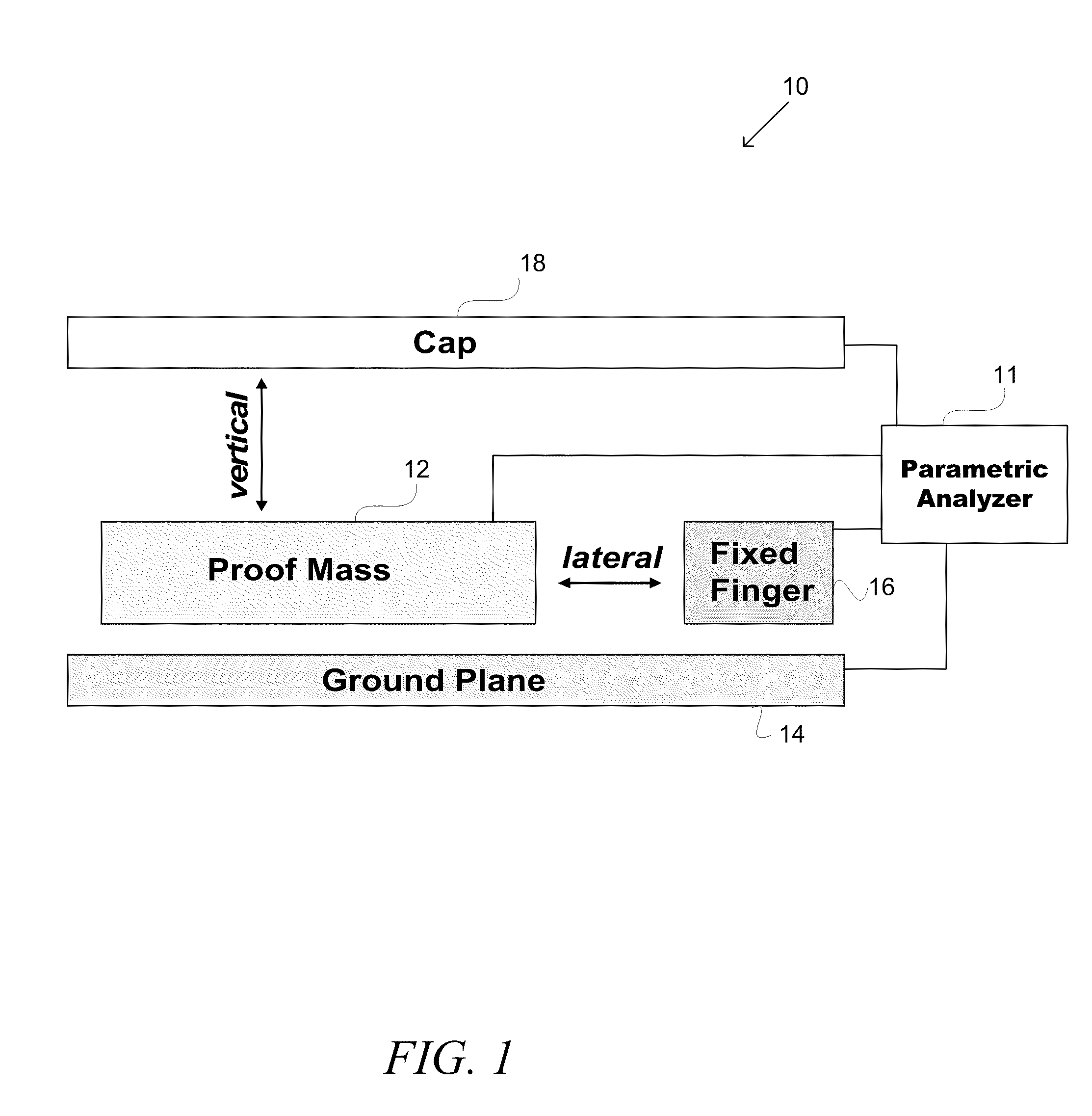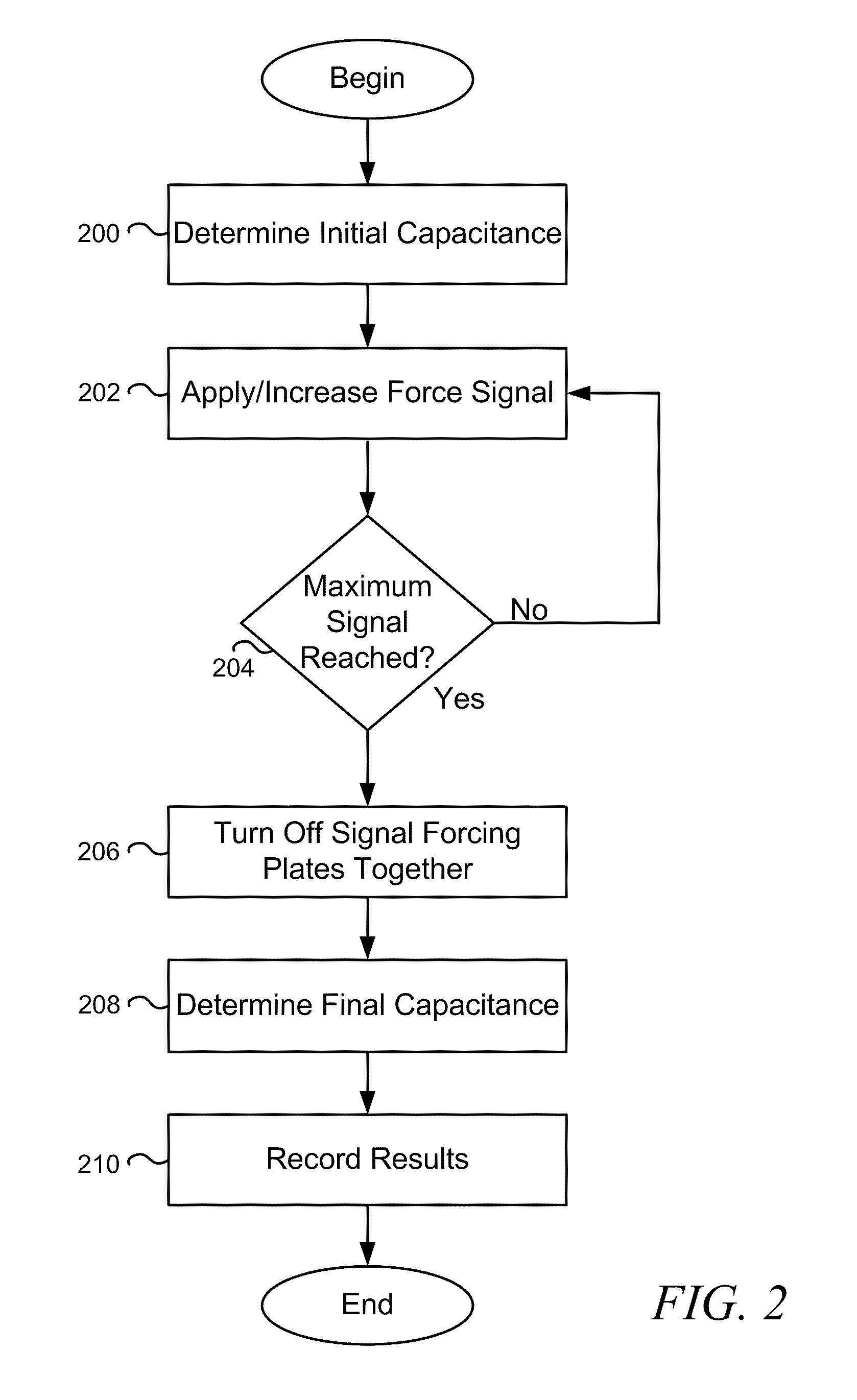MEMS Stiction Testing Apparatus and Method
a technology of stiction testing and mems, which is applied in the direction of microstructural devices, instruments, and mechanical means, can solve the problems of stiction problems, many currently available stiction tests of mems devices, and inoperable devices, and achieve the effect of mitigate the first electrical signal and low valu
- Summary
- Abstract
- Description
- Claims
- Application Information
AI Technical Summary
Benefits of technology
Problems solved by technology
Method used
Image
Examples
example 1
[0055]If current is detected when determining the initial capacitance (e.g., at step 200 in FIG. 2) or at the lowest test voltage (e.g., at step 202 in FIG. 2), then the two surfaces already may be in contact with one another (e.g., due to stiction, fabrication defect, or breakage) or another failure condition may exist (e.g., a short circuit). The logic flow of FIG. 2 could be modified to proceed directly to block 210 if such a condition exists.
example 2
[0056]If a predetermined maximum test voltage (force) is reached without detecting the maximum current, then the movable part may be stuck or impeded (e.g., due to stiction elsewhere, incomplete release of the movable part, springs that are too stiff, or other defect or impediment). The logic flow of FIG. 2 could be modified to terminate the loop between blocks 202 and 204 and proceed to block 210 if a maximum force signal is reached without detecting contact between the test surfaces.
example 3
[0057]Even if a MEMS device passes the stiction test (i.e., the surfaces are forced together and then separate properly), the MEMS device still may be considered defective or unsuitable for a particular purpose. For example, if a larger or smaller than expected test voltage is needed to force the surfaces together (e.g., due to springs that are too stiff or too pliable), the MEMS device may be flagged as being defective or suspect. The logic flow of FIG. 2 could be modified to record an appropriate device status if contact is detected at a force signal that is above or below a predetermined force signal threshold.
[0058]Thus, it should be noted that the process of FIG. 2 is but one of many different processes that can implement illustrative embodiments of the invention. For example, some processes affirmatively measure and record the pullout voltage. Such processes often use this pullout voltage (which is a function of stiction) to further optimize the MEMS fabrication process. Such ...
PUM
| Property | Measurement | Unit |
|---|---|---|
| voltage | aaaaa | aaaaa |
| voltage | aaaaa | aaaaa |
| voltage | aaaaa | aaaaa |
Abstract
Description
Claims
Application Information
 Login to View More
Login to View More - R&D
- Intellectual Property
- Life Sciences
- Materials
- Tech Scout
- Unparalleled Data Quality
- Higher Quality Content
- 60% Fewer Hallucinations
Browse by: Latest US Patents, China's latest patents, Technical Efficacy Thesaurus, Application Domain, Technology Topic, Popular Technical Reports.
© 2025 PatSnap. All rights reserved.Legal|Privacy policy|Modern Slavery Act Transparency Statement|Sitemap|About US| Contact US: help@patsnap.com



